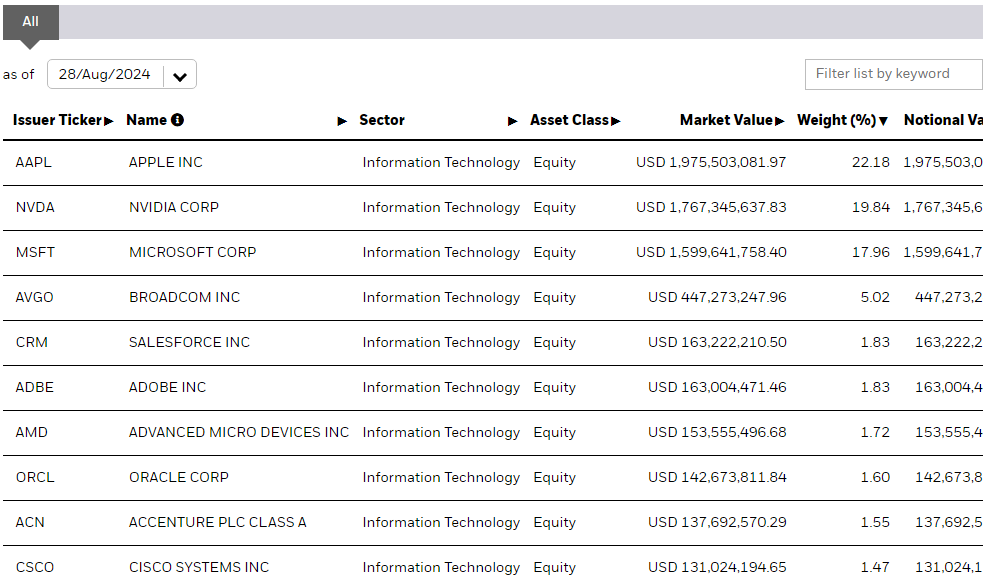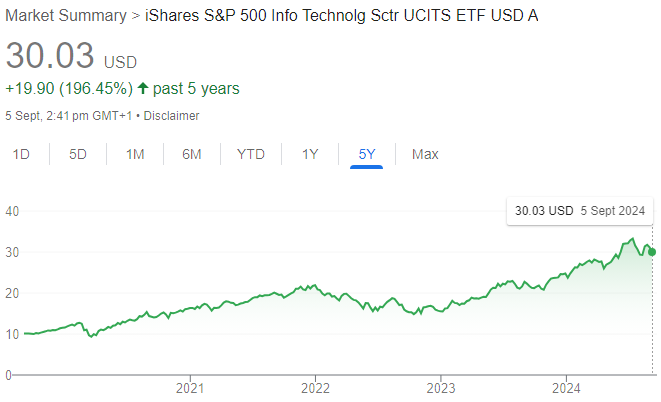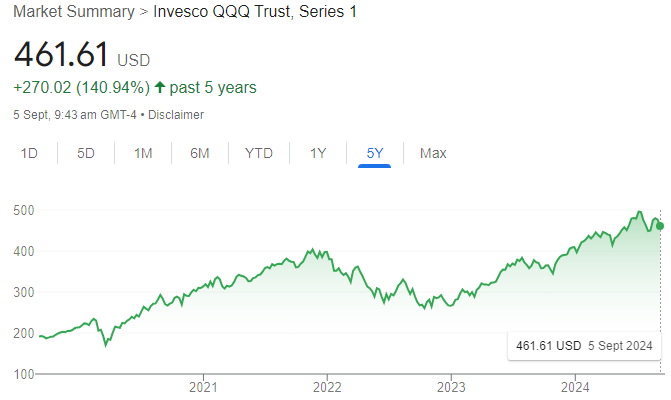My Favourite ETFs
In the universe of ETFs out there, is there something for you? Let me share with you some of the ETFs that I like.
PERSONAL FINANCEINVESTMENTS
I shared my love for SPYL previously, but unless you want to have a 1 ETF portfolio, you need to have more ETFs in your portfolio. So what other ETFs should you consider?
Preface: There are great bond ETFs out there but I prefer bond substitutes.
An Overview of the ETFs that I like


These ETFs have low expense ratio and are also accumulating in nature, meaning you don't have to worry about re-investing dividends.
All the ETFs are listed on the London Stock Exchange and you can invest in them through Interactive Brokers. Here's a referral link.
I'll now go into detail as to why I like these ETFs.
ACWD
ACWD tracks the MSCI ACWI, and what this means is that it gives you exposure to both developed and emerging markets. Developed markets include the US, Germany, and Japan, while emerging markets include India, Turkey, and Chile.
I like this ETF as this is the cheapest ETF (expense ratio: 0.12%) in the market right now that gives you both developed and emerging market exposure in a single ETF. This ETF is also rather established and does a good job of tracking the index (see performance below).


Liquidity is an issue, but it should get better over time. The expense ratio of this ETF was 0.40% previously, but it was lowered to 0.12% as of 1 August 2024. This is expected to drive inflows into the ETF, and improve the liquidity. If you are a buy and hold investor, the relative illiquidity now shouldn't concern you too.
FWRA
FWRA tracks the FTSE All-World index, and gives you exposure to both developed and emerging markets. FWRA tracks a wider market and gives you exposure to approximately 2600 securities. ACWD only gives you exposure to about 2300 securities.
I like FWRA as it is slightly more liquid than ACWD at this point, but has a higher expense ratio of 0.15%.
SWRD
SWRD tracks the MSCI World Index, and gives you exposure to about 1400 securities across developed markets.
Developed markets have outperformed emerging markets for quite awhile now, so not everyone wants exposure to emerging markets. If you do not want emerging markets exposure, this is the ETF for you.
Without the emerging market exposure, SWRD's annualised returns (see below) trumps that of ACWD's (compare with above).


EIMI
EIMI is probably the best broad-market emerging markets ETF out there. Let me know if you find a better emerging markets ETF.
EIMI tracks the MSCI Emerging Markets Investable Market Index, and this is what makes EIMI great. EIMI gives you exposure to not just large and mid-cap companies, but includes small cap companies too. EIMI buys you exposure to more than 2800 companies across emerging markets; this gives you exposure to an additional 2000 companies compared to the benchmark MSCI Emerging Markets Index.
EIMI buys you better performance too. For the same expense ratio (0.18%), EIMI outperforms SEMA, which tracks the MSCI Emerging Markets Index.
Here are the annualised returns of EIMI.


Here are the annualised returns of SEMA.


You can observe how EIMI tracks the index better, and delivers better annualised returns across all investment time spans of 1, 3, 5, and 10 years.
IUIT
IUIT tracks the S&P 500 Capped 35/20 Information Technology Index, giving you exposure to technology-sector stocks in the S&P 500 index. Do pay attention to what I wrote earlier. I wrote 'technology-sector stocks', what this means is that companies that are not deemed to be in the technology-sector are not included. Companies such as Alphabet, Meta are not a constituent of this ETF, as they are a part of the communication sector. The same applies for Amazon and Tesla, they are not included in IUIT as they are a part of the consumer discretionary sector.


The top 10 holdings of IUIT are software, hardware and semiconductor companies such as Apple, Microsoft and Nvidia. IUIT is fantastic for investors who wants US technology exposure but wants to avoid owning social media companies (e.g. Meta), and low-margin businesses (e.g. Tesla and Amazon). I know Amazon Web Services has high margins but you can't own Amazon Web Services without buying the ecommerce business as well.
IUIT has delivered fantastic returns despite being rather diversified. I can't complain with a >200% return for the last 5 years.


FYI, this is better than the returns from owning QQQ (or EQQQ). IUIT has a lower expense ratio (0.15%) compared to QQQ (0.20%) too. I don't recommend owning EQQQ because EQQQ does a poor job at tracking the index and has a much higher expense ratio (0.30%).


IUHC
IUHC tracks the S&P 500 Capped 35/20 Health Care Index, giving you exposure to healthcare stocks in the S&P 500 index. The healthcare sector is one of my favourites as it provides strong growth but yet has low volatility. Take a look at IUHC's performance over the last 5 years through this chart below.


IUHC returned approximately 84.8% at the time of writing over the last 5 years. Compare that to the returns of SPY over the last 5 years.


SPY returned approximately 85.9%, just 1.1% more and you can observe for yourself how SPY is much more volatile. You can compare the 10 year chart, and you will get a similar conclusion that the healthcare sector provides strong growth, matching the performance of the wider S&P 500, despite healthcare being a defensive sector.
Exposure to a defensive sector limited my portfolio's downside during the market crash of 2022. During the market crash of 2022, IUHC only lost about 2.3% of its value. You can also observe from the graph above of how IUHC remained more or less flat throughout 2022.

IUIT lost a whopping 28.4% in 2022. If you can't stand volatility, and you don't enjoy seeing paper losses, then you may lose sleep holding a position in IUIT.

Why I buy ETFs
The US market is very sophisticated and efficient, and you can capture a majority of the stock returns by buying SPYL. For the rest of the developed economies and emerging economies where markets are less efficient, it may actually be better to stock pick. However, I want to spend less time stock picking and that's why I buy and own ETFs such as FWRA.
So if you are like me, and you don't want to stock pick much, you can make use of sector ETFs such as IUIT, IUHC to overweigh some companies. That's my approach to 'stock-picking'. Since I'm more familiar with technology and healthcare companies, I'm very comfortable overweighing them by adding IUIT or IUHC to my portfolio.
Conclusion
There are other great ETFs, but I like these six ETFs the most. These six ETFs are low-cost, and do a good job at tracking their respective indices.
If you are a buy and hold investor, ETFs are great for you. If you like stock picking, you can also consider using ETFs to overweigh your favourite companies while staying diversified.
Disclosure: I own some if not all the ETFs mentioned in this article. This article will not be updated going forward.
